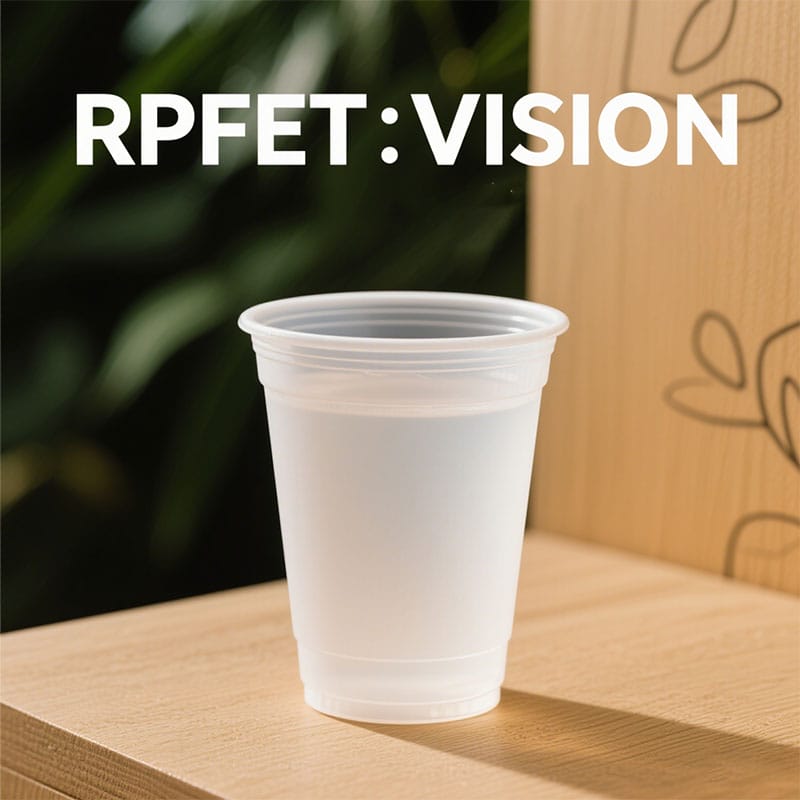In today’s world, sustainability isn’t just a buzzword — it’s a necessity. As consumers become increasingly eco-conscious, businesses are actively seeking ways to minimize their environmental footprint. One of the most exciting developments in this green revolution is the growing use of RPET material in packaging. But what is RPET material, and why is it becoming the go-to solution for food containers and other packaging needs? Let’s dive deep into the world of RPET and explore why it matters more than ever.

Understanding RPET Material: The Basics
RPET stands for Recycled Polyethylene Terephthalate. Essentially, it is plastic that has already served its initial purpose and is then collected, cleaned, and repurposed into new packaging products. This gives a second life to what would otherwise become waste.
To understand the RPET material definition more clearly, consider the life cycle of a single-use plastic bottle. Once discarded, this bottle can be collected, processed, and turned into RPET materials that form the basis of new containers, trays, or clamshells. This process not only conserves resources but also reduces landfill waste and supports a circular economy.
The Rising Popularity of RPET in Packaging
Why has RPET become so popular, especially in the food packaging industry? First and foremost, it meets the growing demand for sustainable solutions without compromising quality or durability. RPET products are strong, lightweight, and resistant to impact — all qualities essential for food-grade packaging.
In addition, RPET material offers excellent clarity, making it an ideal choice for food containers where visibility is important. When customers can see the product clearly, it boosts trust and enhances the shopping experience.
Moreover, using RPET aligns with the values of eco-conscious consumers. By choosing recycled over virgin plastic, companies signal a commitment to sustainability, which can significantly influence buying decisions.
RPET Material Meaning in a Broader Context
To grasp the full RPET material meaning, it’s crucial to look beyond just packaging. RPET is a symbol of innovation in recycling. It transforms post-consumer waste into valuable raw material, reducing our reliance on fossil fuels and lowering greenhouse gas emissions.
This shift also helps companies meet increasingly strict environmental regulations and sustainability goals. Governments worldwide are introducing bans and levies on single-use plastics, and adopting RPET is one proactive way to stay ahead of the curve.
Furthermore, RPET material is FDA-approved for food contact, making it a safe and compliant choice for packaging perishable goods. This has made it especially popular among food manufacturers and retailers looking to blend performance with planet-friendly practices.
Advantages of Choosing RPET Products
Transitioning to RPET products comes with a host of benefits:
- Environmental Impact: Reduces waste and energy consumption compared to virgin plastic.
- Resource Efficiency: Uses fewer natural resources by reprocessing existing materials.
- Consumer Appeal: Appeals to eco-conscious customers seeking sustainable choices.
- Cost-Effective: Over time, supply chain efficiencies can make RPET a financially viable option.
These advantages make RPET a smart choice for brands looking to future-proof their packaging strategies. As demand grows, economies of scale continue to drive innovation and lower costs.
The Role of RPET in Food Packaging
Food safety is a top priority, and RPET material excels in this regard. It’s designed to maintain product freshness, offer tamper resistance, and provide excellent visual appeal. From deli trays to fruit containers, RPET materials are now commonly used across the food industry.
What makes RPET especially suitable for food packaging is its ability to be thermoformed into various shapes and sizes. This flexibility ensures it meets a wide range of packaging needs, whether for bakery goods, salads, or ready-to-eat meals.
In fact, many major retailers are switching to RPET food containers because of their sustainability credentials and robust performance.
RPET vs. Traditional Plastics: A Comparative Look
While traditional plastics like PET are still widely used, they rely on virgin petroleum resources and are often discarded after one use. In contrast, RPET gives plastic a new lease on life, drastically improving its environmental profile.
Unlike biodegradable alternatives that may need specific composting conditions, RPET fits seamlessly into existing recycling infrastructure. This makes it easier for consumers to recycle used packaging and contributes to a more circular economy.
Choosing RPET material over traditional plastic isn’t just an eco-friendly gesture — it’s a practical and scalable solution for industries seeking to minimize waste and enhance sustainability.
Challenges and Future Outlook for RPET
Despite its many benefits, RPET material does face certain challenges. One major issue is contamination in the recycling stream, which can impact the quality of the final product. Educating consumers and improving sorting technologies are key steps in overcoming this hurdle.
Another challenge lies in supply chain consistency. As demand for RPET grows, manufacturers must ensure a steady supply of high-quality recycled feedstock. Fortunately, increased investment in recycling infrastructure is beginning to address this need.
Looking forward, innovations in chemical recycling and better collection systems promise to expand the availability and application of RPET materials across industries.
Why Tiptopak Is Your Trusted Partner for RPET Packaging
If you’re looking to embrace sustainable packaging solutions, Tiptopak is here to help. As a leading manufacturer of food packaging containers, Tiptopak uses high-quality RPET material to create eco-friendly, durable, and visually appealing products. Our RPET food containers are perfect for businesses aiming to reduce their environmental impact without sacrificing functionality.
We understand the importance of both sustainability and performance. That’s why our RPET packaging meets stringent quality standards while helping you align with modern consumer expectations. Whether you need custom solutions or standard food packaging, Tiptopak is your go-to source for reliable and responsible products.
Conclusion: Make the Smart Switch to RPET Material
As the global call for sustainability grows louder, switching to RPET material is no longer just a trend — it’s a strategic move. With its environmental benefits, cost-efficiency, and practical applications, RPET is revolutionizing the packaging industry. Especially in food packaging, it offers a perfect blend of safety, clarity, and sustainability.
Ready to make a positive impact? Choose Tiptopak and join the movement toward a cleaner, greener future. Our RPET-based food packaging solutions are just a consultation away — contact us today to explore how we can support your sustainability journey.


